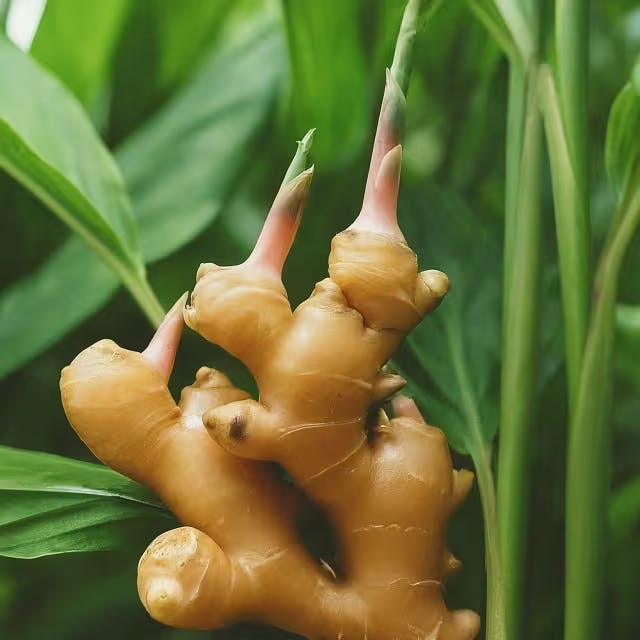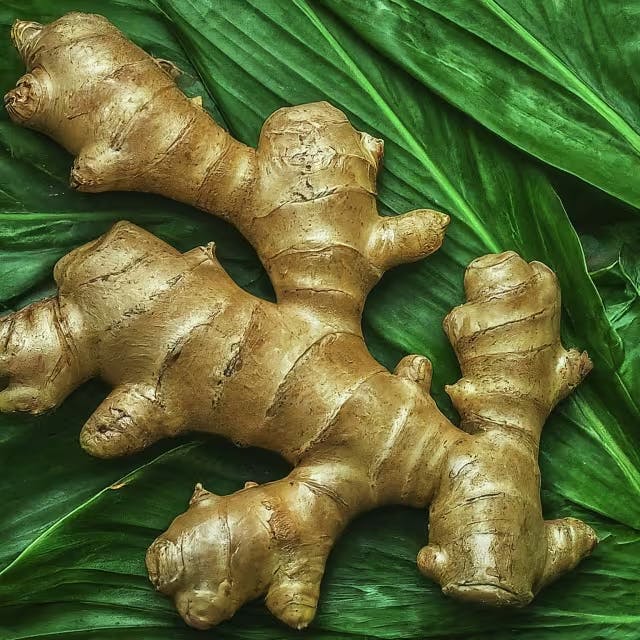Ginger and Galangal: Growth Update and Tips
Go4Turf
February 23, 2024

Embarking on the journey of growing ginger and galangal can be both exciting and challenging for gardening enthusiasts and culinary experts alike. As these tropical rhizomes become increasingly popular for their culinary uses and health benefits, understanding the basics of their cultivation and care is essential. This article provides an updated guide on how to nurture these aromatic plants, offering essential tips for thriving ginger and galangal plants from planting to harvest, while also addressing common pests and diseases, and best practices for storage.
Key Takeaways
Understanding the specific growth requirements for ginger and galangal, including their preference for warm, humid climates and well-draining soil, is crucial for successful cultivation.
Regular watering, ensuring the soil remains moist but not waterlogged, and providing adequate shade can significantly boost the growth of ginger and galangal plants.
Implementing organic mulching techniques benefits both ginger and galangal by retaining soil moisture, regulating soil temperature, and suppressing weed growth.
Identifying common pests and diseases early, such as rhizome rot and leaf spot, and employing organic pest control and disease prevention methods are essential for healthy plants.
Harvesting ginger and galangal at the right time, typically when the leaves turn yellow and begin to die back, ensures maximum flavour and potency.
Proper curing and storage of ginger and galangal, including drying the rhizomes and storing them in a cool, dry place, extend their shelf life and preserve their culinary qualities.
Understanding the Basics of Growing Ginger and Galangal
Growing ginger and galangal can be a rewarding experience for both novice and experienced gardeners alike. These tropical plants require specific conditions to thrive, but with some attention to detail, you can enjoy fresh ginger and galangal from your own garden.
Climate and Soil Conditions
Both ginger and galangal prefer warm, humid climates and well-draining soil. They do not tolerate frost. If you're in a cooler region, consider growing these plants in pots indoors or in a greenhouse.
Watering and Fertilization
Regular watering is key to keeping your ginger and galangal happy, especially during dry spells. However, avoid waterlogging as this can lead to root rot. A monthly dose of a balanced fertilizer will support their growth.
When to Plant
The best time to plant ginger and galangal is in late winter or early spring, after the risk of frost has passed. This gives them a long growing season to mature.
For those interested in diving deeper into the aspects of growing ginger and galangal, including the ideal environmental conditions and care techniques, this detailed guide from the Illinois Extension offers valuable insights.
Remember, patience is key when growing these plants. It can take up to 8-10 months for ginger and galangal to be ready for harvest. Watching your plants grow and flourish is part of the joy of gardening!

Essential Tips for Thriving Ginger and Galangal Plants
If you're enthusiastic about growing ginger and galangal, getting the conditions just right is essential for nurturing healthy plants. These tropical perennials thrive in a warm, moist atmosphere, but don't worry; with a bit of care, they can also do well in cooler climates. The right location in your garden or greenhouse is crucial—both plants enjoy a bit of shade since too much direct sunlight can harm their leaves. They also love a moist, well-draining soil that's rich in organic matter, which helps their roots to spread out and soak up all the necessary nutrients.
Proper watering is crucial. Ginger and galangal need moisture to flourish but can't stand being waterlogged. Aim to keep the soil consistently moist without letting it get soggy. If over-watered, these otherwise sturdy plants could suffer from root rot. A handy tip is to water the plants when the top inch of the soil starts to feel dry.
Feeding your plants with a balanced, organic fertilizer once a month during their growing phase can significantly promote their growth and encourage the development of tasty rhizomes. It's important to remember that these plants are in no hurry to grow. Ginger typically takes about eight to ten months to mature, whereas galangal may take slightly longer.
If you're in a cooler region, consider potting your ginger and galangal. This makes it easy to bring them indoors when it gets colder, ensuring they receive the warmth they need throughout the year.
As the growing season ends, let your plants mature fully before harvesting to guarantee the best flavor and potency from the rhizomes. When the leaves begin to die back on their own, it's time to collect your rewards. And, if you're thinking ahead, why not save some pieces of ginger or galangal root to plant for next season?
For those looking to dive deeper into how to cultivate these unique and beneficial plants, checking out the resources from the University of Wisconsin Division of Extension could be incredibly helpful. They offer detailed guides and expert advice to assist both beginner and seasoned gardeners in growing these exotic flavors in their own gardens.
Identifying and Tackling Common Pests and Diseases in Ginger and Galangal Cultivation
When growing ginger and galangal, encountering pests and diseases can be disheartening. However, with proper identification and targeted action, these issues can be managed effectively. Two common culprits are Rhizome rot and Leaf spot.
Rhizome rot, primarily caused by the fungus Pythium spp., leads to soft, discolored rhizomes that may eventually rot away. Aeration and ensuring well-draining soil can prevent waterlogging, a condition conducive to the spread of this disease. Meanwhile, Leaf spot, usually a result of fungal infections, presents as discolored patches on leaves. Promoting good air circulation around the plants and avoiding overhead watering can significantly reduce the risk of leaf spot.
Here are some practical tips for dealing with these issues:
Rhizome Rot:
Ensure proper soil drainage.
Plant rhizomes in raised beds if drainage is a concern.
Avoid over-watering.
Leaf Spot:
Space plants adequately to improve air circulation.
Use drip irrigation instead of overhead watering to keep foliage dry.
Regularly remove and dispose of infected leaves to prevent the spread of the disease.
For more comprehensive information on cultivating these plants, consider reading this detailed guide. It covers everything from soil preparation to watering techniques, providing you with the knowledge to grow ginger and galangal successfully.

Harvesting and Storage Practices for Ginger and Galangal
The timing of harvesting ginger and galangal is crucial for achieving the best flavor and potency. These rhizomes reach their peak maturity approximately 8-10 months after planting when the leaves begin to yellow and die back. This is a sign that they have accumulated maximum flavor and are ready for harvest.
To ensure longevity, proper storage methods must be followed post-harvest. Freshly harvested ginger and galangal can be cleaned and stored in a cool, dry place or in the refrigerator. For longer-term storage, these rhizomes can be sliced or grated and then frozen, or dried and ground into powder.
Here's a brief guideline on storage:
Method | Procedure | Shelf Life |
Refrigeration | Store in a plastic bag in the crisper drawer | 1 month |
Freezing | Peel, slice, or grate, then freeze in airtight containers | 6 months |
Drying | Slice thinly and dry in a dehydrator or a cool, dry place | Up to 1 year |
Keeping these tips in mind will help maintain the quality and extend the usability of your ginger and galangal, making them a versatile ingredient in your kitchen for various culinary uses. For more detailed insights on cultivation and uses, check the comprehensive guide on ginger and galangal. In conclusion, mastering the cultivation of ginger and galangal can be a rewarding endeavor, provided one adheres to the guidelines of warm, humid climates, well-draining soil, and meticulous care in watering, fertilization, and disease prevention. By planting these roots at the optimal time and ensuring the right conditions, gardeners can look forward to harvesting their flavorful crops in 8-10 months and employing various storage methods to extend their use. By embracing these essential tips, enthusiasts of ginger and galangal can enjoy the bountiful yields and the aromatic, spicy flavors these plants bring to a wide array of culinary delights.
Frequently Asked Questions
What are the ideal growing conditions for ginger and galangal in cooler climates?
To grow ginger and galangal in cooler climates, prioritize warmth and humidity by possibly using a greenhouse or indoor pots. They require well-draining, rich soil and partial shade to protect from direct sun. Ensure consistent moisture without waterlogging, and feed monthly with balanced fertilizer. Aim to plant after the last frost, providing a long growth period before the cooler months return. Remember, patience is essential as these plants mature roughly in 8-10 months.
How should you water and fertilize ginger and galangal plants for optimal growth?
For optimal growth, ginger and galangal plants require regular but careful watering to maintain consistent soil moisture without becoming waterlogged, as this can lead to root rot. They benefit from a monthly application of a balanced, organic fertilizer during their active growing phase. It's essential to ensure the soil is well-draining and to adjust watering in response to rainfall and temperature changes to meet the plants' needs without over-saturating the soil.
What signs indicate it is the right time to harvest ginger and galangal?
The right time to harvest ginger and galangal is when the leaves begin to yellow and die back, typically around 8-10 months after planting. This indicates that the rhizomes have matured and developed their full flavor. Harvesting at this stage ensures the best taste and potency of the rhizomes for culinary use.
How can you prevent common diseases like Rhizome rot and Leaf spot in ginger and galangal plants?
To prevent common diseases like Rhizome rot and Leaf spot in ginger and galangal plants, ensure proper soil drainage and avoid over-watering. Plant rhizomes in raised beds if necessary. Space plants adequately to improve air circulation, and use drip irrigation instead of overhead watering to keep the foliage dry. Regularly remove and dispose of infected leaves to prevent disease spread.
What are the best methods for storing ginger and galangal after harvest to maintain their flavor and potency?
To preserve the flavor and potency of ginger and galangal after harvest, store them in a cool, dry place or refrigerate in a plastic bag. For longer preservation, you can also freeze sliced or grated rhizomes in airtight containers for up to 6 months, or dry and grind them into powder to extend their shelf life up to a year. These methods ensure your ginger and galangal remain vibrant for culinary use.